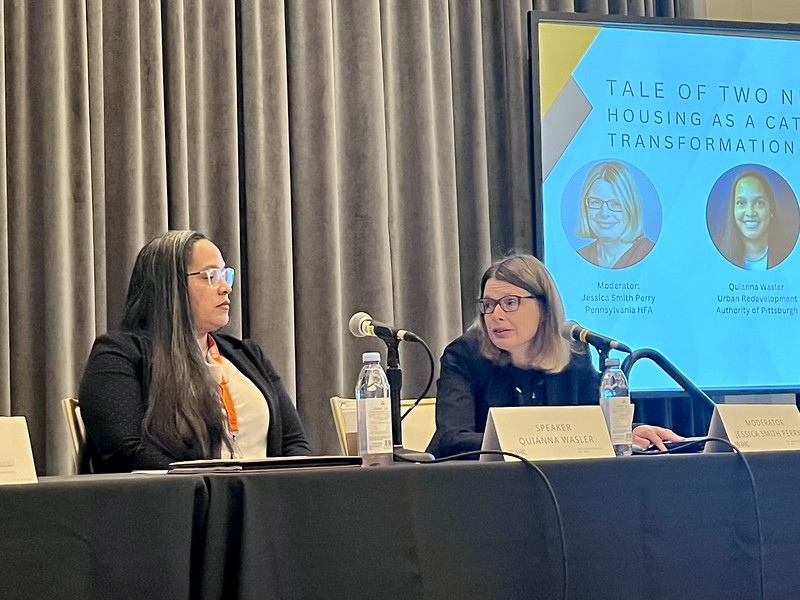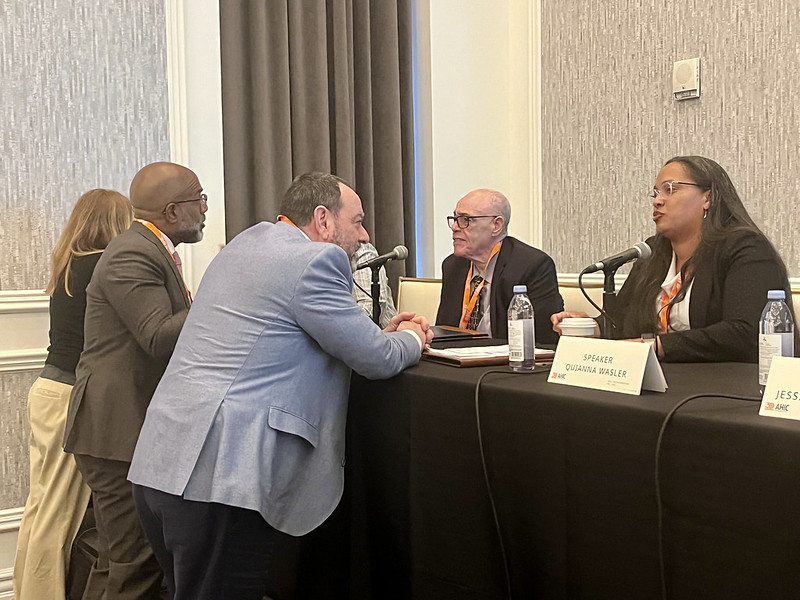Post-Closing Risk Management
Navigating LIHTC Portfolio Stress: Trends, Red Flags, and Strategies for Senior Investors
The LIHTC industry is navigating an era of unprecedented stress. Economic pressures, sponsor instability, construction delays, and rising operating costs are squeezing properties across all phases. At the 2025 AHIC Spring Meeting, Jessica Ragosta Early (Partner, Holland & Knight) moderated a discussion with Jeff Connolly (SVP, Enterprise Community Asset Management), Jackie Moore (Director of Asset Risk Management, RBC), and Matt Boelter (Managing Director of Asset Resolution and Special Servicing, NEF).
The State of the Market: Pressure from All Sides
Since 2020, LIHTC properties have faced mounting pressures. Operating costs have risen 6–7% annually, with insurance premiums increasing at double-digit rates for seven consecutive years. Coupled with higher interest rates, these expenses have eroded cash flows, driven down debt coverage ratios, and pushed some properties into negative cash flow. Rent collection challenges persist.
The State of the Market: Pressure from All Sides
Since 2020, LIHTC properties have faced mounting pressures. Operating costs have risen 6–7% annually, with insurance premiums increasing at double-digit rates for seven consecutive years. Coupled with higher interest rates, these expenses have eroded cash flows, driven down debt coverage ratios, and pushed some properties into negative cash flow. Rent collection challenges persist.
The development phase faces similar strain. Higher rates and pandemic disruptions have delayed construction, exhausted contingencies, and left many projects needing gap funding. About 50% of projects now require re-underwriting to achieve stabilization. Portfolio-wide, watch lists have grown from 10% to 15–17% of assets. (See the Slide Deck.)
Major Trends Driving LIHTC Portfolio Stress
The panel separated the industry’s current challenges into three categories:
The panel separated the industry’s current challenges into three categories:
Development Phase: Delays, Overruns, and "Failures to Launch"
Construction delays, often caused by extreme weather or permitting snags, are widespread. Inflation, rate hikes, and labor shortages are exhausting contingencies. Small developers are especially vulnerable if key third-party personnel depart mid-project. General contractor (GC) issues, such as liens, lawsuits, and change orders, are critical red flags.
Construction delays, often caused by extreme weather or permitting snags, are widespread. Inflation, rate hikes, and labor shortages are exhausting contingencies. Small developers are especially vulnerable if key third-party personnel depart mid-project. General contractor (GC) issues, such as liens, lawsuits, and change orders, are critical red flags.
Stabilized Operations: Rising Costs and Cash Flow Crunch
Even stabilized projects struggle. Rising operating costs outpace rent growth, and security costs, like hiring off-duty police, are crushing margins. Tenant nonpayment remains a challenge. Many pandemic-era reserves are depleted, leaving properties exposed to unexpected expenses. Property management quality is increasingly vital.
Even stabilized projects struggle. Rising operating costs outpace rent growth, and security costs, like hiring off-duty police, are crushing margins. Tenant nonpayment remains a challenge. Many pandemic-era reserves are depleted, leaving properties exposed to unexpected expenses. Property management quality is increasingly vital.
Operating costs — insurance, utilities, security, maintenance — are rising faster than rental income. Some urban properties have had to hire off-duty police, an unbudgeted cost that crushes margins. Tenant nonpayment remains a challenge. Many pandemic-era reserves are now depleted, leaving little buffer for unexpected costs like major repairs or tax reassessments. Without sufficient reserves, even small shocks can trigger financial distress.
 Sponsor-Level Pressures: From Distress to Exits
Sponsor-Level Pressures: From Distress to ExitsSponsor instability is becoming a major threat. Panelists shared examples of sponsors abandoning LIHTC projects entirely, often before 8609 forms were issued, forcing investors to scramble for receiverships or substitute GPs. Sponsors facing liquidity crises are also selling off assets or refusing to fund obligations like insurance premiums, requiring investors to step in with protective advances. In one case, a sponsor’s self-managed properties padded repair costs to siphon cash, highlighting how desperation can lead to compliance risks and jeopardize asset integrity.
Spotting Trouble Early: Key Red Flags for Investors
The speakers identified a number of early warning signs of potential problems with a project or a sponsor.
The speakers identified a number of early warning signs of potential problems with a project or a sponsor.
-
Development Phase: Chronic construction delays, funding draw gaps or irregularities, liens or legal action involving the project, GC or subcontractors, excessive change orders and overruns, contentious site meetings, GC troubles elsewhere (e.g. liens filed on unrelated jobs).
-
Operational Phase: Delayed/absent financial reporting (late audits, irregular quarterly reports), leadership or key staff turnover, frequent property management changes or higher site staff turnover, occupancy and collections issues, reserve drawdowns, physical condition/neglect of maintenance (e.g. high water/sewer bills hinting at leaks).
-
Sponsor/Guarantor: Sponsors: Avoidance or unresponsiveness, financial stress signals (e.g., requesting asset sales, trying to liquidate their interest, not contributing required funds, multiple troubled projects or known issues outside your fund, engaged in litigation and disputes, key personnel loss, signs of fraud or unethical practices.
Strategic Responses: Tools for Managing Risk and Workouts
The panelists shared a toolkit of strategies and best practices for managing troubled assets and mitigating risks.
Construction Challenges
-
Adjuster Relief: Flexibility on timing of investor contributions can stabilize construction.
-
Replace or Support the GC: If the GC falters, investors may need to facilitate replacement.
-
Advance Equity Early: Structured early equity infusions can keep projects moving.
-
Restructure Financing: Gap funding, soft loans, or loan modifications can address shortfalls.
Operational Underperformance
-
Intensive Asset Management: Increase monitoring frequency; deploy asset management agreements (AMA).
-
Property Management Changes: Replace ineffective management teams swiftly.
-
Operating Subsidies & Rent Boosts: Pursue Section 8 contracts or other rent supports.
-
Reserve Support: Reforecast budgets and stress-test reserves.
-
Debt Restructuring: Negotiate loan terms to match current property realities.
Sponsor Financial Distress
-
Early Sponsor Review: Identify at-risk sponsors through regular assessments.
-
Interim Management: Use AMAs to take operational control without formal GP replacement.
-
GP Replacement or Co-GP Structures: Install qualified replacements if necessary.
-
Financial Workouts: Offer negotiated relief to stabilize distressed sponsors.
-
Protective Advances: Cover critical needs like taxes or insurance while enforcing defaults.
Key Questions Investors Should Be Asking Syndicators
Strong investor-syndicator relationships are crucial to navigating today’s challenges. The panel identified several key areas for investors to focus on:
-
Portfolio Monitoring: “Can you walk me through the watch list for our portfolio?” Ask which deals are on it, why, and how the list has changed.
-
Sponsor Health: “Are any of our sponsors showing distress?” Investors should understand sponsor risks and ask about backup general partner (GP) plans if a sponsor fails.
-
Construction Progress: “How are our pre-stabilization projects tracking against budget and schedule?” and “Any draw disruptions or liens filed?”
-
Property Operations: “Which stabilized assets are underperforming, and why?” and “How is property management quality?”
-
Reserves and Security: “Do we have adequate reserves at project and fund levels?” and “What’s our worst-case exposure for deals at risk?”
-
Market/External Factors: “What broader issues—such as tariffs or HUD funding delays or reductions—could impact us?”
-
Intervention Triggers: “When will you step in with a workout team or replace a partner, and how will we be involved?” Investors need to align with syndicators on intervention thresholds.
Strengthening Investor-Syndicator Collaboration
Senior investors should engage proactively with syndicators to manage risk effectively. Key strategies include:
Senior investors should engage proactively with syndicators to manage risk effectively. Key strategies include:
-
Create a Joint “Early Warning” System: Don’t rely only on annual reports. Push for quarterly risk-focused portfolio reviews and request briefings on any watchlist or workout deals.
-
Deepen Sponsor Due Diligence: Maintain ongoing review of sponsor financials. Encourage syndicators to perform annual or semi-annual sponsor health checks and discuss succession plans if key people depart.
-
Increase Operational Transparency: Seek access to monthly property-level reports or summaries and join site visits for critical or underperforming assets. Seeing troubled properties firsthand can offer valuable insights.
-
Support Syndicators in Tough Decisions: Sometimes a syndicator may hesitate to replace a GP or management agent due to political or relationship reasons. As a senior investor, you can reinforce that investor interests come first, and you support decisive action.
-
Ensure Adequate Syndicator Resourcing: Ask about syndicators’ staffing levels, particularly asset management and workout teams. High caseloads could pose risks; ensure syndicators are sufficiently resourced to manage challenges.
-
Promote Knowledge Sharing: Encourage sharing lessons learned across crises, like the 2008 recession. Syndicators and investors should exchange best practices, such as portfolio-wide insurance renegotiations or creative subsidy solutions.
Conclusion: Protecting Your LIHTC Portfolio in the Next 6–12 Months
The stresses in the LIHTC market are real but manageable with diligence, flexibility, and collaboration. Senior equity investors should prioritize the following actions:
-
Intensify Portfolio Surveillance: Treat the next year as critical for early problem detection. Implement red flag monitoring, review contingency plans, and ensure regular watch list updates from syndicators.
-
Shore Up Reserves and Financial Backstops: After year-end audits, reassess reserve levels. If thin, consider topping them up or reallocating fund distributions. Be ready with capital for protective advances or emergencies.
-
Engage in Proactive Workouts: Address issues early. Support workouts before defaults occur, even if it means early equity pay-ins or loan restructures. Speed improves the chances of success.
-
Strengthen Sponsor Partnerships (or Find Alternatives): Support reliable sponsors through flexibility or resource connections. Identify weaker sponsors and work with syndicators to transition management if needed.
-
Advocate for Policy Solutions: Support broader relief efforts, such as additional gap financing or compliance flexibility, by sharing data and advocating at local and federal levels.
All of these steps boil down to one principle: active portfolio management. LIHTC equity investing was sometimes viewed as a passive, long-term hold with predictable returns. The current reality is more dynamic and requires a more active role by investors.
